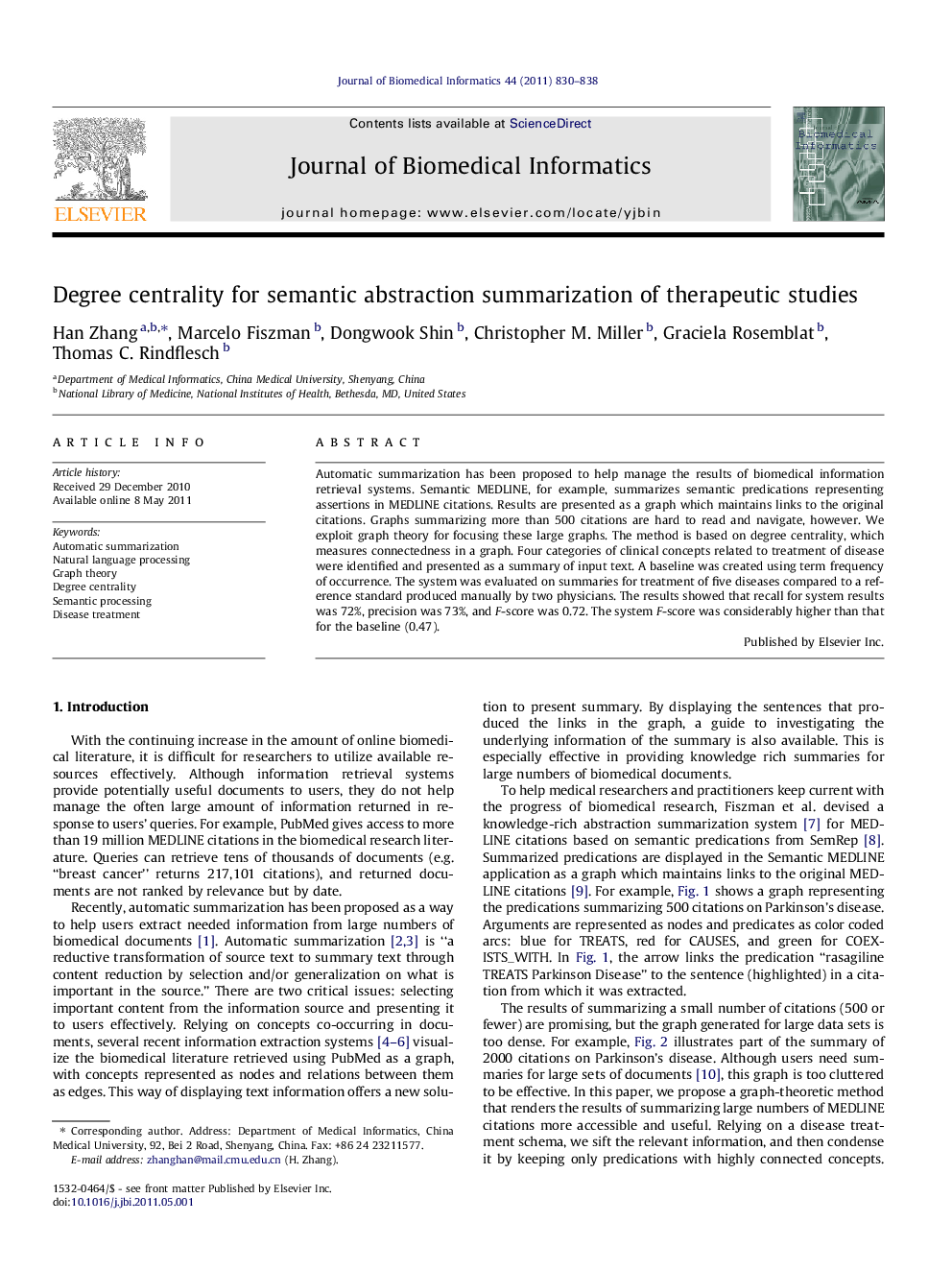| Article ID | Journal | Published Year | Pages | File Type |
|---|---|---|---|---|
| 518262 | Journal of Biomedical Informatics | 2011 | 9 Pages |
Automatic summarization has been proposed to help manage the results of biomedical information retrieval systems. Semantic MEDLINE, for example, summarizes semantic predications representing assertions in MEDLINE citations. Results are presented as a graph which maintains links to the original citations. Graphs summarizing more than 500 citations are hard to read and navigate, however. We exploit graph theory for focusing these large graphs. The method is based on degree centrality, which measures connectedness in a graph. Four categories of clinical concepts related to treatment of disease were identified and presented as a summary of input text. A baseline was created using term frequency of occurrence. The system was evaluated on summaries for treatment of five diseases compared to a reference standard produced manually by two physicians. The results showed that recall for system results was 72%, precision was 73%, and F-score was 0.72. The system F-score was considerably higher than that for the baseline (0.47).
Graphical abstractThe graph illustrates a therapy-oriented summary for Parkinson’s disease. The method uses degree centrality to identify major comorbidities, relevant body parts, drugs and procedures for this disease.Figure optionsDownload full-size imageDownload as PowerPoint slideHighlights► Graph theory is exploited to extend a semantic abstraction method for summarizing multiple biomedical texts. ► Degree centrality is effective in selecting information crucial for summarizing research on treatment of disease. ► The system performs significantly better than a frequency-based method in identifying salient information.
